This work was completed in 2021.

Touch, 2021, paint, spray colours, paper on canvas, 262 x 211 x 10 (55 х 75 х 8, 105 х 156 х 10, 106 х 106 х 8, 35 х 35 х 7, 25 х 45 х 8) cm.
It was once exhibited in a gallery in Berlin during my exhibition on synaesthesia.

It was a composition of five works. The idea of the work was to express the colour and shape of my feeling from the moment of hugging. A small or fat or tall or thin adult or child contains colour - emotion.

I organized these 5 shapes into one composition because I wanted to place the viewer in this colour. I used Mark Rodko’s technique here when he said that the viewer should approach the picture at a distance of about 30 cm in such a way that his peripheral vision captures only the colour. This way the viewer would be drawn into the emotion of the colour.

I am currently reworking these canvases individually. For some reason, I no longer feel extremely passionate about this work. It feels like I learned something, tried it and now I need to move on.

Abyss, 2022, recycled newspapers, acrylic paints, plaster, water-based fixatives, cardboard, wood, 157 x 95 x 13 cm.
But this does not always happen; for example, the work Abyss is something excellent for me. Whatever I want to study further, I want to preserve this work as one of the stages of my research and work with colour and form.
At the same time, I noticed that the work does not end for me, but rather, after bringing it to a certain point, I lose interest. But if the work, even after my supposed completion, continues to excite me and ask questions, this already means something else. Anselm Kiefer, for example, says that his works are never finished, only if the Gallery takes them away from the studio for exhibition - an unnatural stop occurs. I think I'm starting to understand this strategy better. Now that I'm going back to my old works and starting to refine or rework them.
So, I have long wanted to try Pollock's technique on the uneven surface of my works.
And, oh God, it turned out terrible.

Even though the painting was the same colour and the splash paints were the same tone, due, probably, to shadows and unevenness and the wrong choice of color combinations, the work simply lost its essence.
It was more than a mistake. It was at this moment that I just wanted to remove a layer from the canvas, so to speak, delete all. But I continued.
I tried to write something, suggesting that a bright accent and meaning of the word could improve the situation.
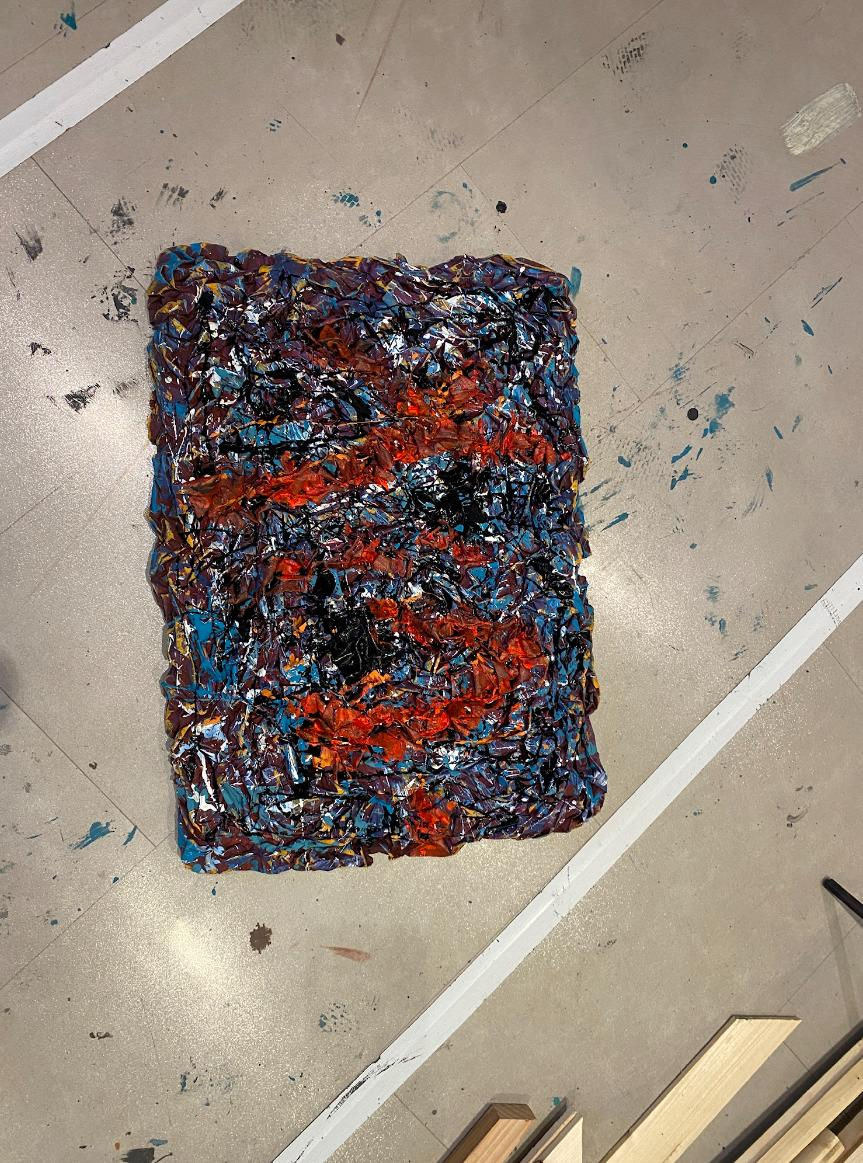
But no, everything was still bad. The surface was overloaded with ideas, different textures of paints, many colours - simply too many ideas for a square centimetre.

I tried to bring in other material... but the general test did not resonate with me either.
Then the work waited for about two months. It was just hanging in my studio and from time to time I saw it, but I didn’t think about it. This has already happened to me many times. Some works stand, lie, are stored unfinished or unloved, and then bam and I need exactly it. Two months later, while mixing blue paint, I saw this work. Next, I brought all the colours together, but at the same time, I kept the original layer for the sake of the complexity of perception.
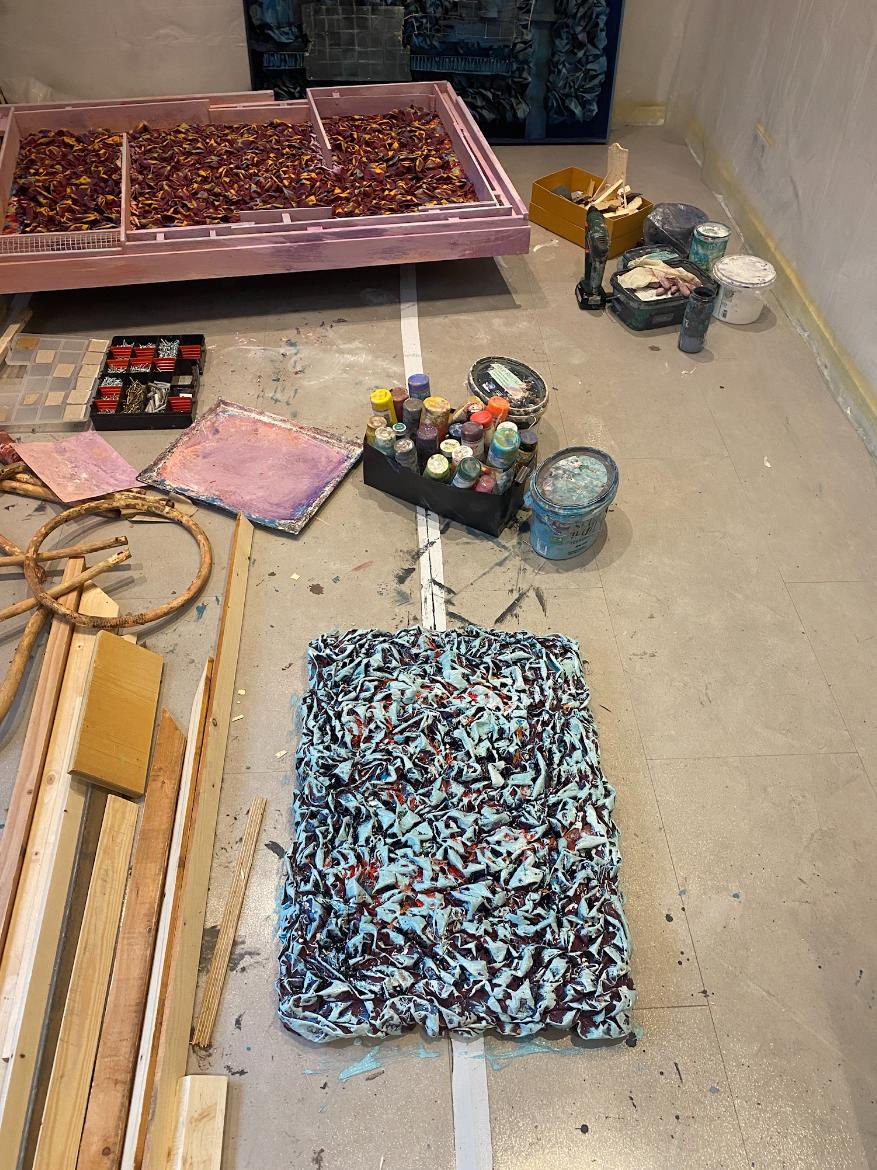
After the colour became uniform, it was as if it was necessary to continue.

The cool colour asked for something as opposed to the warm one. I added a piece of raw canvas.

Then I wanted to respond to beauty in a radical way. For me, work became beautiful. A stunning blue colour, multi-faceted, multi-toned and shimmering due to shadow pits - just stunning. And I attached an unhewn wooden board.
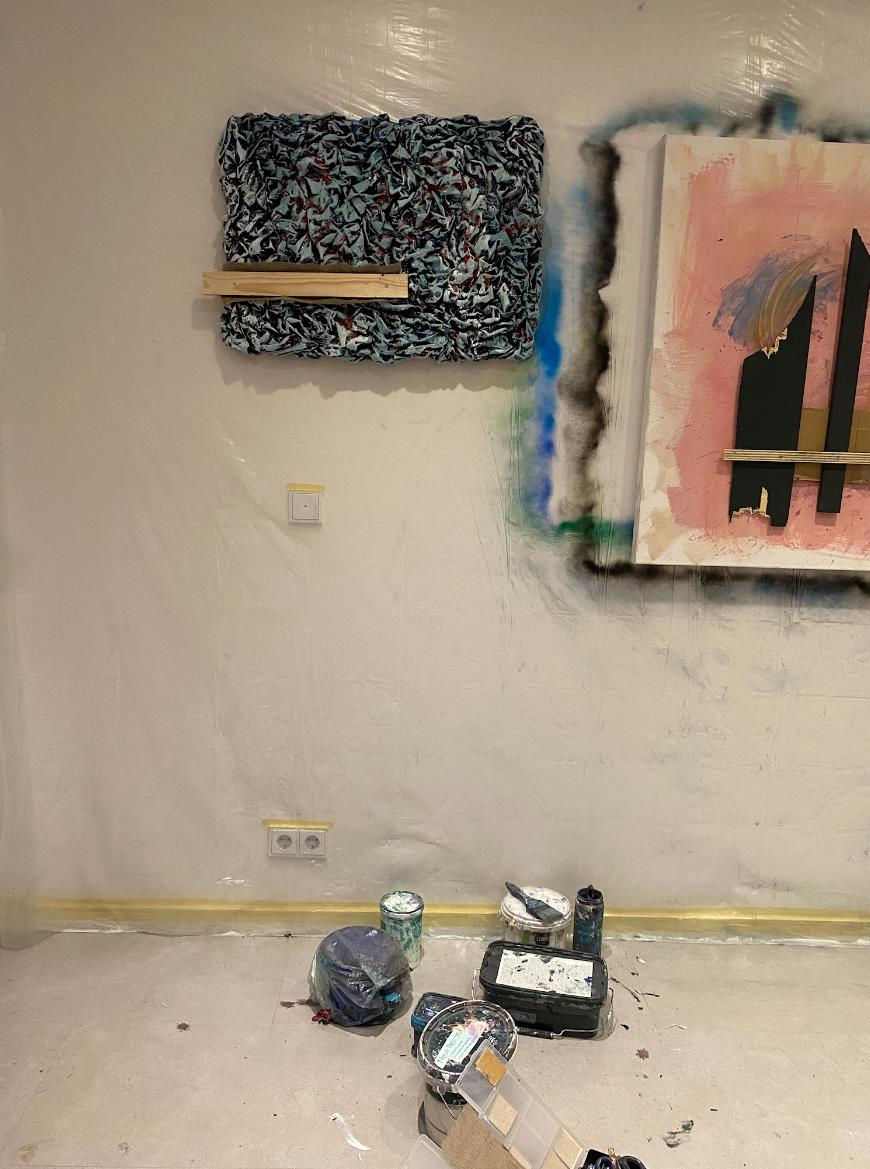
It stood out too much, so I added colour to balance the surfaces.

And again the feeling of incompleteness. I can do more here! Since I had been working on destruction all this time, I had the appropriate material.
I realized that it is very difficult to break a board beautifully in composition or shape.
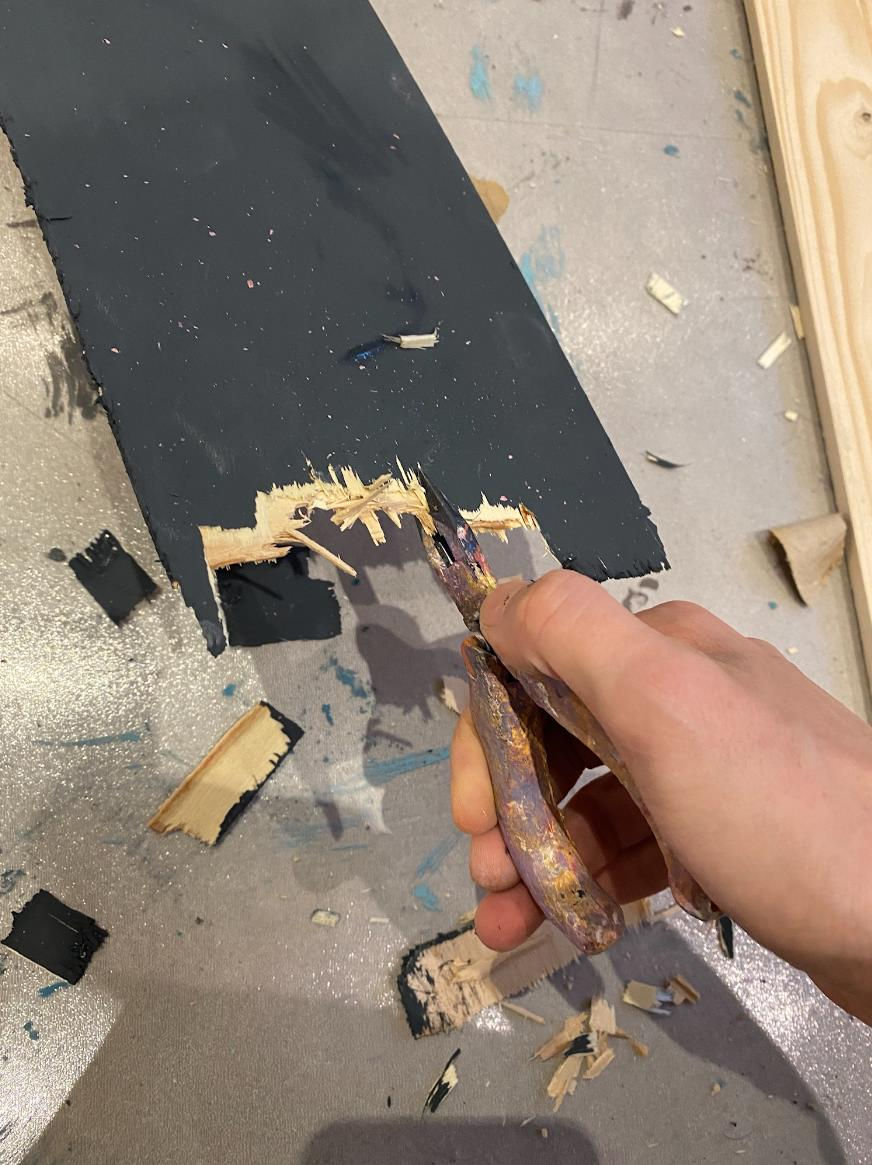
And that's what happened.


So, does the working approach, to the failure and further, brings anything new to my way of working? Does it challenge my usual pattern of working? How and to what effect? I would say no, because I already worked according to this scheme. But now, the fact that I can now talk about this more consciously is true and important.
Approximately the same process happened with other work.
At the beginning, I put the drawing into work. But it was still not completed and it was not clear to me where it should develop. When the task with the representation of my studio appeared, it seemed to me that this work could become my studio. And it is. Only at the moment, I urgently need to finish the course, and there is no decision regarding completion of the work yet. And I don’t want, now, when the work is developing and growing, to just quickly finish it somehow.

This work seemed to contain my heavy sculptures and material from my childhood. Moreover, this is a reflection of my original motivation - colour. The colour field fills the entire structure of my studio. At the same time, this is a view of my studio from above - from the clouds.

I found a photo from 2001, this is one of the options for interior design I did as a teenager. Nothing supernatural and talented, but this photo explained to me my passion for changing the purpose of objects, working with what is at hand, and decorating, and improving the environment. I collected old objects and adapted them not for practical use, but for decoration. At the same time, I fit the objects into the environment of the room. This is the moment when I am 17 and I dream of studying interior design.
In my current work “the portrait of the studio” there is some connection with psychology (my childhood memories of working with wood and my father’s tools), multi-layered walls (the studio is the only place of happiness and comfort for me - the walls protect me), a labyrinth (I don’t know where I’m going with my art and what looking for). Connection to the narrative - here turn left and then right and you have reached the end of my studio. This is a response to the commercial aspects of my work, they ask me to be glossy and shiny, to have the work framed and hung on the wall, my reaction is the opposite. I will place the work on the floor. To have a labyrinth for a laboratory rat (according to the Chinese horoscope, I am a rat).
I recently had a visitor in the studio and he said something like - “yes, you can’t trust the news, but art cannot lie.” Is this really like that? Is it possible to consider the physical and digital as a conflict, because they are fighting over the dominating state over information?


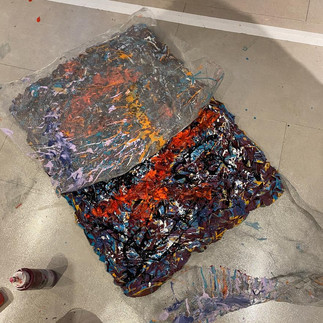













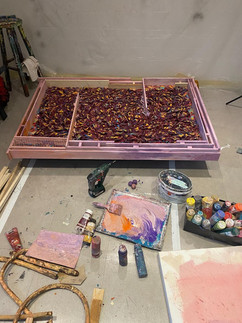


Comments